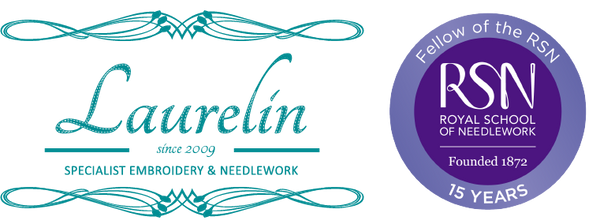Crewelwork (Crewel Work)

Crewelwork or 'crewel embroidery' is a form of surface embroidery worked with crewel thread, a 2 ply yarn. It has been around for many centuries, an early example can be seen in the Bayeux Tapestry, dating from the 11th century.
The most famous style of crewelwork is known as Jacobean, because it reached its peak popularity during that period (16th century). The Jacobean style is often based around the theme of the Tree of Life, with symbolic elements such as the pomegranate, fig and lion. It features bold, scrolling leaves and flowers, and often fantastical animals, which were drawn from the descriptions of travellers.
Crewelwork can also be used to great effect for more modern or figurative designs, in fact crewel wool lends itself to all sorts of embroidery projects. It can be a bit more forgiving than other threads, and it has a warm, inviting texture.
When I trained, we were allowed to use only Appleton's crewel wool. As an eczema sufferer, that was a bit of a disaster and really put me off crewelwork. That is, until I found the beautiful Renaissance Dyeing crewel wools, which are dyed hand dyed with natural dyes. They are absolutely brilliant for people with troublesome skin and are also perfect for creating the feel of Jacobean work, as the dyes have not changed since that time.
A huge range of stitches are included in crewel work, here are just a few:
Trellis filling | Block shading | Burden stitch | Satin stitch | Long and short | Buttonhole stitch | Stem stitch
Chain stitch | Coral stitch | Pekinese stitch | French knots | Bullion knots | Raised stem band
If you want to learn more about crewelwork, I highly recommend this book by Becky Quine. I also have a range of crewelwork kits, or you could join a class.

